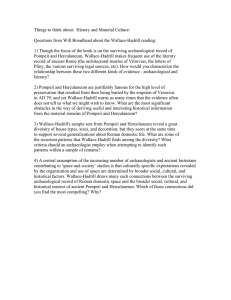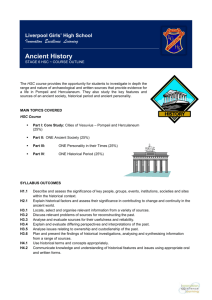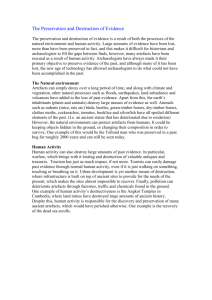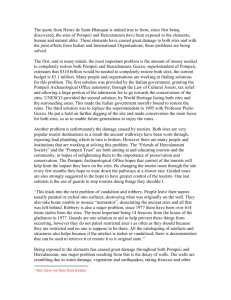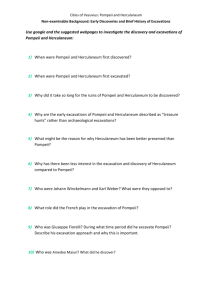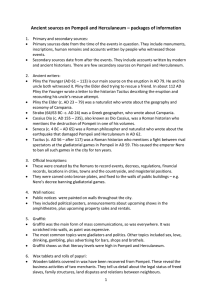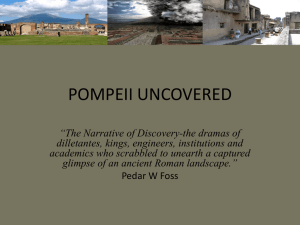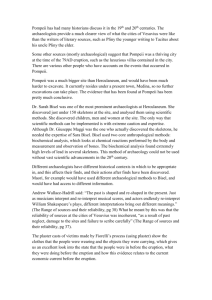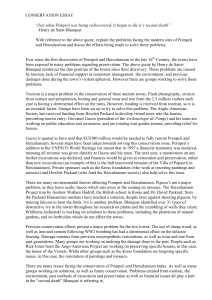3.4 Ethical Issues
advertisement
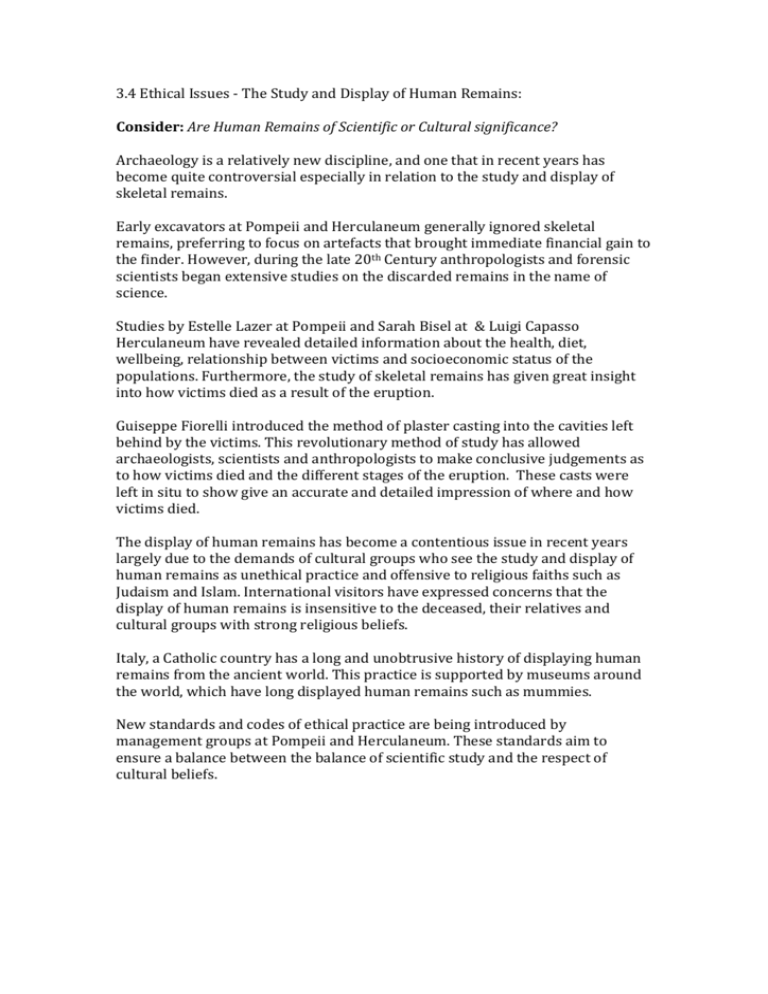
3.4 Ethical Issues - The Study and Display of Human Remains: Consider: Are Human Remains of Scientific or Cultural significance? Archaeology is a relatively new discipline, and one that in recent years has become quite controversial especially in relation to the study and display of skeletal remains. Early excavators at Pompeii and Herculaneum generally ignored skeletal remains, preferring to focus on artefacts that brought immediate financial gain to the finder. However, during the late 20th Century anthropologists and forensic scientists began extensive studies on the discarded remains in the name of science. Studies by Estelle Lazer at Pompeii and Sarah Bisel at & Luigi Capasso Herculaneum have revealed detailed information about the health, diet, wellbeing, relationship between victims and socioeconomic status of the populations. Furthermore, the study of skeletal remains has given great insight into how victims died as a result of the eruption. Guiseppe Fiorelli introduced the method of plaster casting into the cavities left behind by the victims. This revolutionary method of study has allowed archaeologists, scientists and anthropologists to make conclusive judgements as to how victims died and the different stages of the eruption. These casts were left in situ to show give an accurate and detailed impression of where and how victims died. The display of human remains has become a contentious issue in recent years largely due to the demands of cultural groups who see the study and display of human remains as unethical practice and offensive to religious faiths such as Judaism and Islam. International visitors have expressed concerns that the display of human remains is insensitive to the deceased, their relatives and cultural groups with strong religious beliefs. Italy, a Catholic country has a long and unobtrusive history of displaying human remains from the ancient world. This practice is supported by museums around the world, which have long displayed human remains such as mummies. New standards and codes of ethical practice are being introduced by management groups at Pompeii and Herculaneum. These standards aim to ensure a balance between the balance of scientific study and the respect of cultural beliefs. Ownership: International control & Trafficking: Today, artefacts from the ancient world are big business and treasures from the sites of Pompeii and Herculaneum are some of the most prized possessions on the black market. Looters have long exploited the exposed areas of Pompeii and Herculaneum and the poor security at both sites. The problem of looting has been compounded by local mafia groups (Camorra) who make millions of $ from the sale of ancient artefacts. In 2004, the Italian Government shocked archaeologists and international management groups by proposing to legalise the private ownership of remains and archaeological treasures in Italy. This proposal would allow those in possession of ancient artefacts to own them legally if they paid a tax of 5% of the estimated value of the object. The preservation of ancient artefacts is multilateral project with responsibility being shared between the Italian Government, museums and International groups such as UNESCO.

